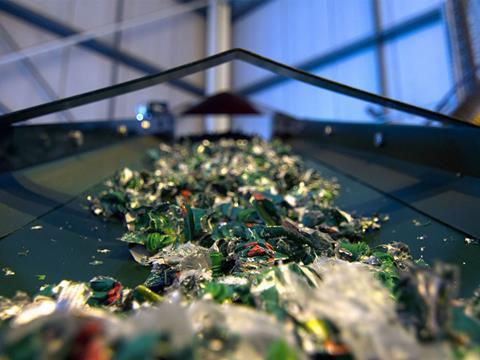
Enval has launched Touchdown, a joint project with Kraft Heinz and Sonoco aimed at improving packaging sustainability and accelerating the deployment of its novel plastic recycling solution in the United States.
For Enval, the ultimate aim of the project is to see its first recycling plants in the United States. These plants will reportedly be capable of recycling previously unrecyclable plastic packaging using a unique proprietary pyrolysis technology for treating low-density packaging waste.
Enval says that this process is the only technology in the world capable of recycling plastic aluminium laminates by splitting them into high-value oil and aluminium with a low-carbon footprint.
The first phase of the project will involve Enval assessing the current disposal solutions for materials used by Sonoco and Kraft Heinz during the production and use respectively of flexible plastic packaging.
At the end of the first phase, Enval will produce, with input from the other partners, a feasibility study that will include potential locations for future recycling plants in a way in which the financial and environmental costs associated with transporting the packaging to the recycling plants is minimised.
Enval will then continue the project by building these plants, which could initially target the treatment of scrap generated by Sonoco and Kraft Heinz, but with the idea of incorporating post-consumer waste in the future.
Speaking exclusively to Packaging Europe, Linda Roman, head of packaging technology at Kraft Heinz, put the announcement into context: “We continue to explore a number of options, such as our commitment to a fully circular Heinz Tomato Ketchup bottle in the EU by 2022, as part of our global aim to make 100% recyclable, reusable or compostable packaging by 2025 and we hope to be in a position to announce further details later in the year.”
Meanwhile, commenting on the factors that are driving technologies and partnerships like this forward, Roman said: “Kraft Heinz is committed to taking steps to reduce our operational packaging impacts as well as to support the move toward a more circular economy.
“We continue to explore ways to first make our packaging more sustainable from a design perspective, such as incorporating fiber-based solutions that can be composted in industrial facilities, and secondly, we strive to make our packaging more recyclable from a post-consumer-use perspective, including with our flexible films, which are used to protect the quality and deliver the functionality to meet consumer needs across our portfolio.”
















